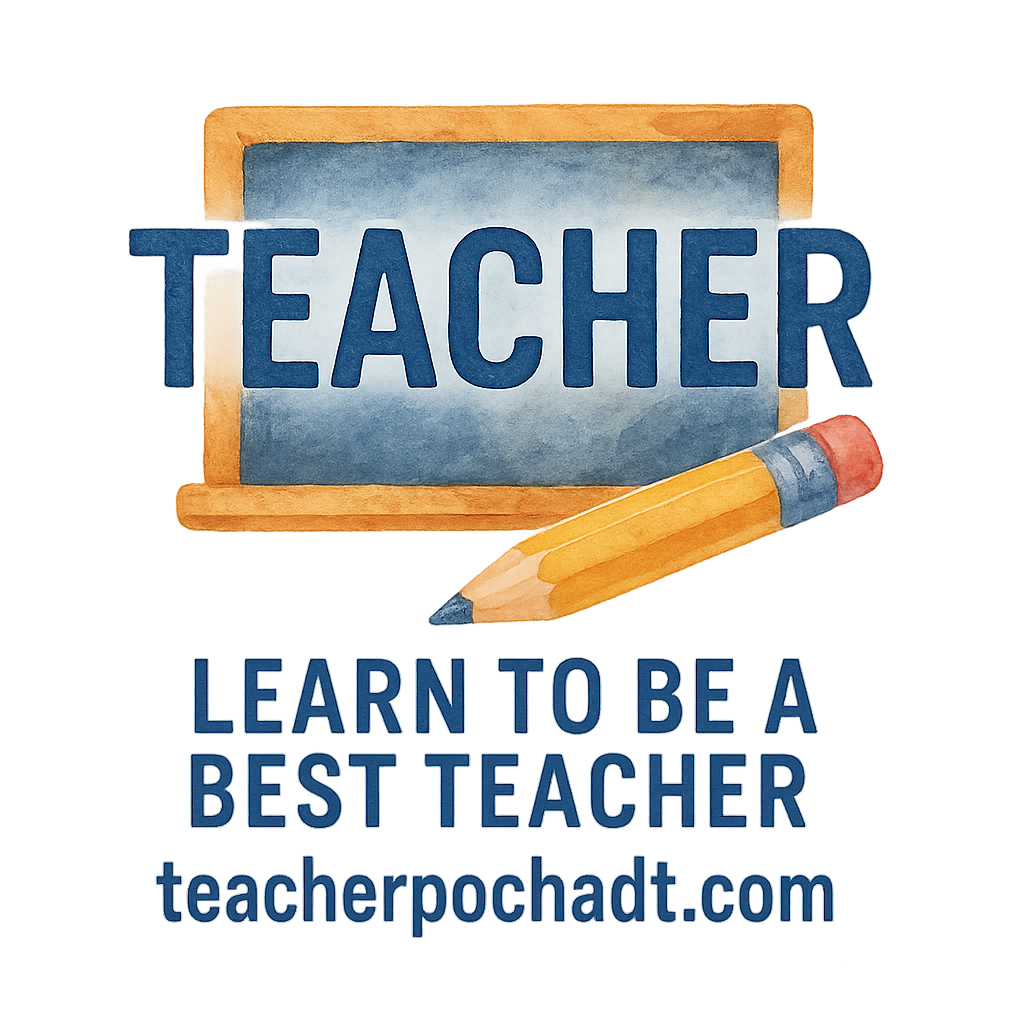Introduction: The Future of Education with EdTech
As we enter 2025, technology is not just reshaping our personal lives but also transforming education at its core. Educational Technology (EdTech) is playing a pivotal role in how teachers engage with students, how lessons are delivered, and how learning is experienced both inside and outside the classroom. Staying updated with the latest EdTech trends is essential for teachers to ensure they’re offering the most effective and relevant education.
This article explores the 10 EdTech trends every teacher should know in 2025. These innovations are already making waves in classrooms, offering new ways to teach, engage students, and optimize learning outcomes. From AI-driven tools to VR-based lessons, the future is brighter and more tech-savvy than ever before.
For more insights on enhancing your teaching strategies, check out Classroom Management Techniques.
What is EdTech? A Brief Overview
Before diving into the trends, it’s important to define EdTech—a term that encompasses all the digital technologies used to enhance the educational process. Whether it’s software applications, hardware tools, or digital resources, EdTech tools are designed to improve the delivery of education.
As we approach 2025, EdTech will continue to evolve, offering teachers and students more powerful and integrated tools for teaching, learning, and assessment. It’s crucial for educators to keep up with these changes to remain effective and competitive in today’s educational landscape.
Why EdTech is Crucial for Teachers in 2025
In 2025, teachers will rely more on EdTech tools to deliver personalized learning, track student progress, and manage classrooms more efficiently. As students become more familiar with digital tools, it’s essential for teachers to integrate these technologies into their teaching methods.
EdTech enables teachers to provide individualized learning experiences for students, streamline administrative tasks, and foster a collaborative and inclusive learning environment. With data analytics, AI, and other emerging technologies, teachers can offer more targeted interventions and create a dynamic classroom experience.
Learn more about improving your teaching practice through teacher reflection.
1. AI-Powered Learning Tools
Artificial Intelligence (AI) is revolutionizing the education sector. In 2025, AI-powered learning tools will be essential for educators to personalize lessons and automate repetitive tasks. These tools can help teachers offer real-time feedback to students, adapt to learning styles, and track individual progress over time.
For example, AI-based tutoring platforms can provide additional support to students, offering them customized assignments and practice sessions. This allows teachers to focus on students who need more attention while ensuring that others can work independently.
To see how these tools can enhance your classroom’s learning experience, check out our insights on teaching skills.
2. Augmented Reality (AR) in the Classroom
Augmented Reality (AR) is making education more interactive by superimposing digital elements onto the physical world. Teachers can use AR to bring abstract concepts to life, whether it’s exploring the human anatomy in 3D or walking students through a historical event.
By integrating AR into lessons, students gain a hands-on, immersive learning experience that traditional teaching methods can’t provide. As AR technology continues to advance, its potential to create dynamic, engaging educational content will only grow.
Learn more about engaging your students with fun activities on our page about class activities.
3. Virtual Reality (VR) for Immersive Learning
If AR brings the digital world into the real one, then Virtual Reality (VR) transports students to entirely new worlds. Imagine students virtually exploring ancient civilizations, diving into the ocean to study marine biology, or walking on the surface of Mars. VR allows for immersive, 360-degree experiences that deepen students’ understanding of complex topics.
In 2025, more schools will adopt VR for its ability to engage students in subjects that may seem distant or abstract. VR also offers a level of interactivity and engagement that traditional methods simply can’t match.
For ideas on how to implement this innovative technology, visit our article on classroom technology.
4. Gamification in Education
Learning can be challenging, but when teachers incorporate gamification, students are more likely to stay engaged and motivated. Gamification involves applying game mechanics—such as points, badges, and leaderboards—into the learning process.
This trend makes lessons more enjoyable by turning them into interactive challenges. By integrating educational games into the classroom, teachers can encourage students to take ownership of their learning and make the process more enjoyable.
For a deeper look into effective ways to manage classroom behavior through games, check out our post on classroom control.

5. Personalized Learning through Data Analytics
Gone are the days when all students in a classroom receive the same lesson at the same pace. In 2025, data analytics will enable personalized learning, allowing teachers to tailor lessons based on each student’s performance, interests, and learning style.
Using data from digital tools and assessments, teachers can track student progress in real-time, identify learning gaps, and adjust their teaching methods accordingly. This approach ensures that every student receives the attention they need to succeed.
For tips on enhancing student engagement through data insights, explore our article on student engagement.
6. Cloud-Based Collaborative Platforms
Cloud-based platforms have already begun to replace traditional classroom tools, allowing for seamless collaboration between students and teachers. Tools like Google Classroom, Microsoft Teams, and others enable real-time document sharing, assignment tracking, and communication in and outside the classroom.
In 2025, these tools will be more integrated, allowing students to work together on projects regardless of location. Cloud-based platforms also make it easier for teachers to manage classrooms, assign work, and provide instant feedback.
Learn more about building a collaborative classroom culture in our article on classroom culture.
7. Interactive Digital Whiteboards
Interactive digital whiteboards are quickly becoming a standard in many classrooms. These devices allow teachers to display multimedia content, annotate materials, and engage students through interactive activities. Tools like SMART Boards offer flexibility, making lessons more dynamic and engaging.
Whether you’re brainstorming ideas, explaining a concept, or allowing students to interact with the content, digital whiteboards provide endless possibilities for enhancing classroom learning.
For insights on integrating digital tools into your classroom, check out our page on digital tools.
8. Microlearning: Bite-Sized Learning for Busy Schedules
In today’s fast-paced world, students often struggle to retain long, detailed lessons. Microlearning addresses this by breaking down lessons into short, digestible chunks. These bite-sized lessons can be delivered through mobile apps or online platforms, allowing students to learn on the go.
Microlearning is ideal for students with busy schedules, offering them the flexibility to learn at their own pace without feeling overwhelmed. By 2025, microlearning will be a core component of personalized education strategies.
For more on designing effective class activities, visit our class activities section.
9. Teacher Training with EdTech Tools
As EdTech tools evolve, so too must teachers. To stay competitive, educators must constantly update their skills and knowledge. EdTech tools can facilitate this by offering virtual training programs, webinars, and peer collaboration opportunities.
In 2025, teachers will increasingly rely on these digital platforms to stay current on new technologies and teaching methods, ensuring that their skills align with the demands of modern education.
10. Blockchain in Education for Secure Records
Blockchain technology is making its way into education, offering a secure, transparent way to store student records, credentials, and achievements. With blockchain, teachers, students, and institutions can ensure that academic records are accurate, verifiable, and tamper-proof.
This technology also enables efficient management of digital certificates, making it easier for students to share their qualifications with employers or institutions without the need for physical documents.
The Role of Teachers in Integrating EdTech
While EdTech tools are powerful, they are only effective when integrated thoughtfully into teaching practices. Teachers will need to stay proactive in adopting new technologies, ensuring that they align with their teaching goals and student needs. Professional development will play a critical role in preparing educators for the future of tech-driven classrooms.
How to Choose the Right EdTech Tools for Your Classroom
With an abundance of EdTech tools available, choosing the right ones can be daunting. When selecting tools, consider how well they align with your curriculum goals, how user-friendly they are, and whether they support personalized learning.
The right tools should help foster collaboration, streamline administrative tasks, and engage students in ways that resonate with their learning styles.
Challenges in Implementing EdTech in Schools
Adopting EdTech presents challenges, including technical issues, resistance from teachers, and the digital divide. To overcome these obstacles, schools must provide adequate support, including training for teachers and access to reliable technology.
Conclusion: Embracing the Future of Education
As we head into 2025, EdTech continues to transform education, offering exciting new ways to engage students and enhance teaching practices. By embracing these trends, teachers can provide a more personalized, immersive, and collaborative learning experience. The future of education is here, and EdTech will be at the heart of it.
FAQs
- What is EdTech, and why is it important?
- How can AI be used in the classroom?
- What are the benefits of using VR and AR in education?
- What is gamification, and how can it enhance learning?
- What is microlearning, and why is it effective?
- How do I choose the best EdTech tools for my classroom?
- What are the challenges in implementing EdTech in schools?


